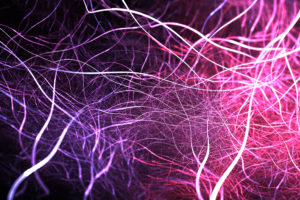Commercializing innovations and sustainability issues highlighted at recent conference.
 The nonwovens sector has diversified from being a single-use product industry to an advanced fibrous materials industry. This shift has been underscored by the possible adoption of a new definition for nonwovens: engineered fibrous assembly, based on balloting at the International Organization for Standardization. Regardless of what it’s called, the nonwovens sector is strong and growing, according to Dave Rousse, president of the Association of the Nonwovens Fabrics Industry (INDA).
The nonwovens sector has diversified from being a single-use product industry to an advanced fibrous materials industry. This shift has been underscored by the possible adoption of a new definition for nonwovens: engineered fibrous assembly, based on balloting at the International Organization for Standardization. Regardless of what it’s called, the nonwovens sector is strong and growing, according to Dave Rousse, president of the Association of the Nonwovens Fabrics Industry (INDA).
Nonwovens and advanced textiles industry professionals, academics in these fields and professionals from the pulp and paper industry gathered recently in Charlotte, N.C., at the Innovative Nonwovens Conference organized by TAPPI (Technical Association of the Pulp and Paper Industry). This event brought leaders from textile-related associations, such as INDA, the Nonwovens Division of TAPPI, Industrial Fabrics Association International (IFAI) and the American Association of Textile Chemists and Colorists (AATCC) to discuss recent developments in the engineered fabrics field. In his keynote address, Rousse emphasized that the industry is continuously evolving and would reach a global value of $50 billion by 2025.
Growth markets
According to INDA, for the North American market, higher growth is expected in durables, driven predominantly by automotive, infrastructure and geosynthetics. For the next five-year period (2016-2021), both the air and liquid filtration industries will register a growth of more than five percent, over the previous five-year period. Wipes will have a growth of about 3 percent. Absorbent hygiene, particularly baby diapers, may not witness growth as against high-growth incontinence products due to the increasing aging population.
Overall, the nonwovens sector will have growth but not without challenges, including the availability of cost-effective, sustainable raw materials and solutions to flushability issues that plague some nonwoven products. There is a need for engineered products that are capable of addressing these challenges now.
Immediate interests
It became evident from the presentations and discussions at the conference that the industry needs to focus on two main aspects: innovations that can be commercialized, and sustainability.
The paper industry has been a pioneer in the commercialization of nanocellulose, and the nonwovens industry should be looking at this product for its own benefit. The Mumbai-based Central Institute for Research on Cotton Technology is leading the charge on scaled-up commercial production of nanocellulose for textile applications.
Performance BioFilaments Inc. of Canada is ramping up its production capacity to produce nanofibrillated cellulose for finding applications in nonwovens. Gurminder Minhas of this company presented information on nanofibrillated cellulose impregnated wet laid nonwovens. Incorporating nanocellulose enhances the strength of nonwovens, illustrating that these products act as binders. Nanofibrillated cellulose have a diameter less than 300 nm and a high aspect ratio.
Translational products
Amit Kapoor, president of First Line Technology, provided his experience in translating laboratory research into market space. Kapoor’s company has successfully commercialized university research and brought to market FiberTect decontamination wipes with applications in military and homeland security segments. An important take-home message from his talk is that ideas do not fail, rather the execution is the problem.
Matthew Tipper of the U.K.-based Nonwovens Innovation and Research Institute presented a human-centered design approach to develop nonwoven products. Two products that have evolved, based on consumer and stakeholders’ requirements, are universal blood filters and hospital-acquired infection-protection products. Tipper said that 70–80 percent of product development fails due to lack of understanding consumer needs, even though there are advanced technologies.
Another subject that attracted attention was sustainability. Efforts are underway to enable cotton to be a viable product for the nonwovens sector. Diverse applications such as cotton-based oil absorbents, breathable cotton nonwoven mats for apparel applications, for example, were discussed. Rory Wolf, business unit manager of Pillar Technologies highlighted the commercial viability of atmospheric plasma process for the nonwovens sector.
“The adaptability of atmospheric pressure plasmas to nonwoven processes has now been confirmed by commercial users of the technology in converting and finishing applications,” Wolf said.
Nonwovens and advanced textiles sectors must focus on consumer need-based innovation approaches to develop cost-effective products that can be accepted by society and achieve commercial success.
Seshadri Ramkumar, Ph.D., is the director of the Nonwovens and Advanced Materials Laboratory, Texas Tech University, and a frequent contributor to Advanced Textiles Source.
 TEXTILES.ORG
TEXTILES.ORG


